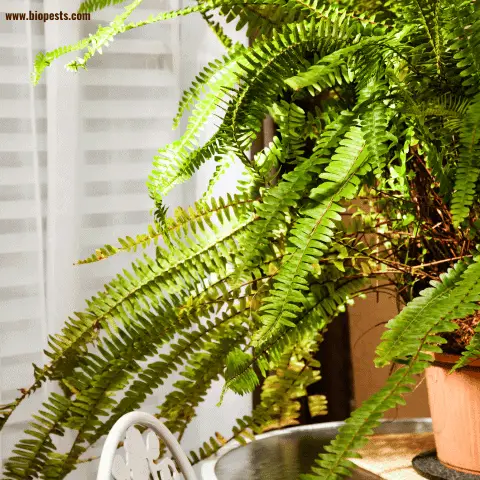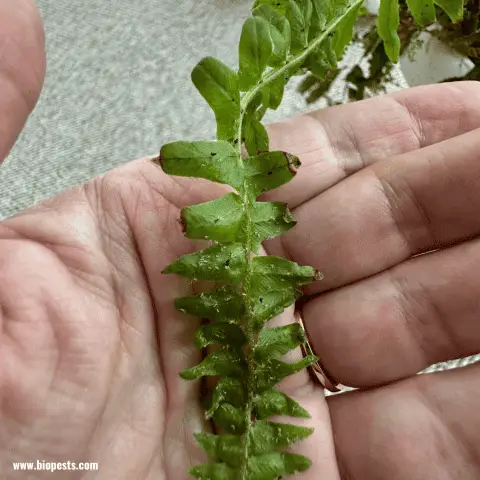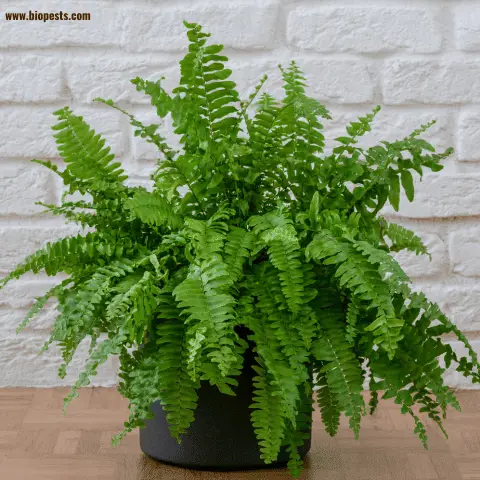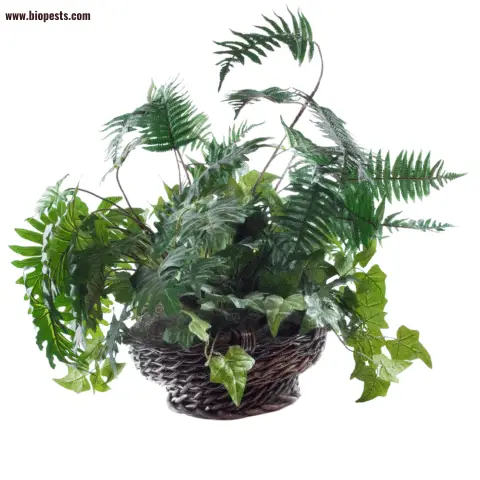Fern plants are a popular choice among indoor gardeners as they add an element of freshness and natural beauty to any space. However, caring for ferns can be tricky, especially for first-time plant owners. These plants require specific conditions and care to thrive, and even minor mistakes like overwatering can have adverse effects on their health.
While it may take some extra patience and effort, anyone can successfully care for their indoor ferns with the right attention and maintenance! In this article, I’ll cover five common mistakes you should avoid when caring for your fern plants – so that you can give them the best chance of thriving indoors!
5 DON’TS for Caring For Your Fern
Overwatering:
Are you making this common mistake with ferns? Many people associate ferns with damp, lush gardens and assume they need lots of water. The truth is ferns thrive in moisture but don’t like their roots to be constantly soaked. Ferns are delicate plants that can easily be damaged by overwatering. These plants require adequate drainage and moist soil, but excess water can cause the roots to rot, and the leaves may start to yellow. To avoid this, ensure the soil is slightly damp but not soggy. You can check the soil moisture level by sticking your finger into the soil, and if it feels dry, water the plant.
Exposing Your Fern Plant to Direct Sunlight:
Discover the secret to thriving ferns – light, but not too much! While ferns need bright light, exposing them to direct sunlight can cause the leaves to burn and wilt. Instead, place your ferns in a location where they receive filtered or indirect sunlight. You can also rotate the plant occasionally to ensure that all sides receive equal light exposure.

Make sure the fern is not placed in a location that is too dark. While these resilient plants can handle some darkness, they still need a touch of light to thrive truly. Avoid leaving them in complete darkness, which can lead to weak and sluggish growth. Instead, find the perfect spot for your ferns – a cozy corner with bright but indirect light. This way, they can enjoy the best of both worlds: a break from harsh sunlight and a healthy dose of brightness throughout the day.
Not Humidifying Your Fern Plant:
Humidity is crucial for the healthy growth of ferns.
Ferns add a touch of lush greenery to any room, however, at a price: These delicate plants require a certain humidity level to thrive. If the air is too dry, it can cause the leaves to turn brown or fall off. This can be a challenge, especially during the summer when air conditioning pumps out dry air. Fortunately, there are ways to help our ferns survive and thrive even in these conditions. One simple option is to invest in a humidifier, which can add much-needed moisture to the air around your ferns. Another option is to mist the plants every few days, which can help them retain moisture and prevent them from drying out. With a little care, you can enjoy your beautiful ferns for many years to come!
Ignoring Pest Infestations:
Pests like spider mites and mealybugs can infest your fern plant, causing damage and stunting growth. Look for pests and signs of infestation, such as yellow or brown spots on the leaves or webbing on the plant. If you notice any signs of pest infestation, isolate the plant and treat it immediately. Delicate care is crucial, as using the wrong products can easily harm their leaves. Don’t be fooled by natural products – just because something is natural doesn’t mean it’s safe for ferns.
What may work wonders for a different plant could spell disaster for your ferns. Trust me; I had a close call with neem oil! (read my article here).

Luckily, I successfully eradicated aphids and saved my plants using a natural and powerful solution: diatomaceous earth. This product, also known as DE comes in the form of white powder and is a safe and natural insecticide that gets the job done! Plus, its effectiveness is long-lasting since soft bodies insects cannot develop a resistance to it, so that you can use it multiple times without worry. Want to learn more? Check out my article all about DE.
Not Pruning Your Fern Plant:
Ferns can grow quite big and become full, which can affect their growth and overall appearance. Regular pruning is necessary to maintain the shape and size of the plant. Pruning your fern is just as important as watering it regularly and keeping it in a well-lit location. By removing any dead or damaged fronds, you are not only encouraging healthy growth but also enhancing the overall appearance of your fern.
So, how do you properly prune a fern? First, sterilize your pruning shears with rubbing alcohol to prevent the spread of disease. Next, locate the base of the frond where it meets the stem and snip it off at a 45-degree angle. Make sure to only remove about one-third of the fronds at a time to avoid shock to the plant. With a little bit of care, your fern will thank you with lush, greenery in no time!
Discover The Early Warning Signs That Your Fern Might Be In Distress
If you’re a proud owner of a fern plant, keeping a close eye on its well-being is essential. Luckily, identifying the first signs that your fern plant is suffering isn’t too difficult.
One of the initial signs to look for is the fading of its vibrant green color. It may start to look dull and lifeless, indicating it’s not receiving enough light or water. Drooping or wilting leaves could mean your fern is thirsty and needs a drink. Another clear sign that something is wrong is the browning or yellowing of the fronds.
It’s vital to address these issues promptly to keep your fern plant looking lush and healthy. So if you notice any of these telltale signs, don’t hesitate to make a change in your care routine! Ensure it receives the right amount of light, humidity, and water. If necessary, adjust these factors accordingly and consider fertilizing your plant to give it an extra boost. With the right care and attention, your fern can recover and thrive once again.

The Benefits Of Keeping A Fern Indoor
If you’re looking for a low-maintenance indoor plant with many benefits, consider adding a fern to your home. These delicate but resilient plants are not only beautiful, but they are also natural air purifiers.
Ferns can improve the air quality in your home by removing harmful toxins often present in indoor environments. They also thrive in low-light environments, meaning they are the perfect solution for those dark corners in your home. Did we mention that ferns are also great at maintaining humidity levels? This makes them especially beneficial for those who suffer from allergies or dry skin. So, what are you waiting for? Go ahead and add a beautiful fern to your indoor garden today!
Best Companion Plants For Ferns
Are you looking to incorporate ferns into your indoor plant collection? Great idea! Ferns are beautiful, easy to care for and add a touch of freshness to any room. But did you know that ferns also have companion plants that can enhance their growth and beauty?

Plants such as peace lilies, spider plants, English ivy, and pothos are perfect companions for ferns, as they thrive in similar conditions. Combining these plants in one pot is aesthetically pleasing and creates a mini ecosystem, promoting healthy growth and reducing the need for frequent watering. So, don’t be afraid to mix and match your green friends, and let your creativity run wild! If you are looking for other plant combinations, don’t skip this great article with ten ideas on how to mix different houseplants in one pot.
In conclusion, caring for fern plants requires attention to detail, patience, and proper care. Avoiding these common mistakes will ensure that your fern plant thrives and adds beauty to your indoor garden. Remember to keep the soil slightly damp, provide humidity and bright but filtered light, watch for pest infestation, and regularly prune your fern plant. With these tips, you can enjoy the beauty and fresh air that ferns bring to your home.
Some of the links above are affiliate links, meaning at no additional cost to you, I will earn a commission if you click through and make a purchase.

